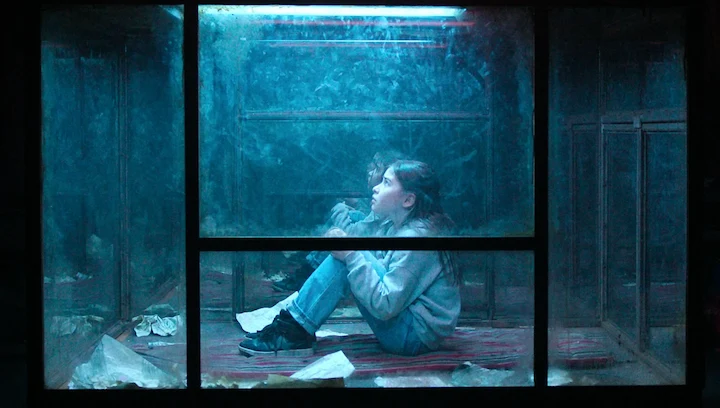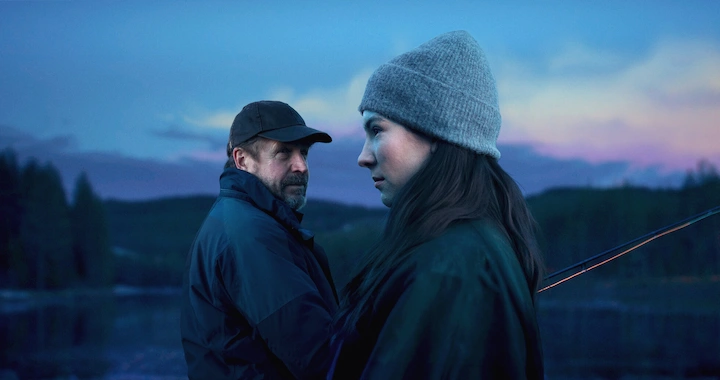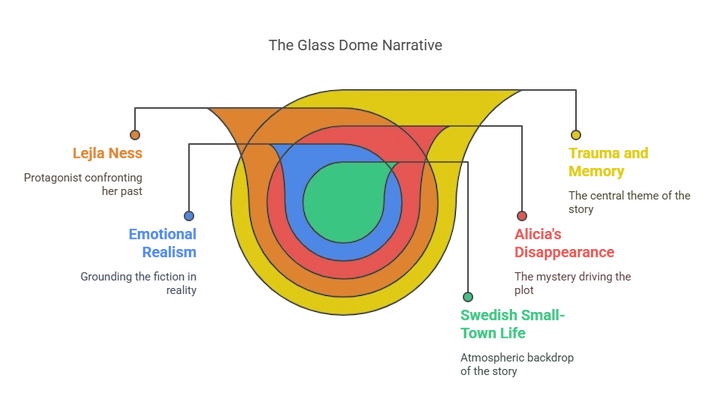The Glass Dome: Unraveling Trauma and Mystery in Netflix’s Nordic Noir Thriller
What starts as a promising student project has taken domestic horror to whole new levels since the Netflix global release of its psychological thriller The Glass Dome. Based on the novels of Swedish author Camilla Läckberg, the series centers around criminologist Lejla Ness, who investigates the disappearance of a young girl, similar to the case involving her childhood kidnapping.
Inspired by not a true story, this is on the level of true story if you relate it to your psychological struggle level and your level of thinking This piece explores the various elements that make the series unique and the emotional heft of its characters – and why it’s not like other thrillers in the genre.

What Is The Glass Dome About?
The Glass Dome centers on Lejla Ness, a criminologist who returns to her small town in Sweden following the death of her adoptive mother. On her return, Lejla soon finds herself roped into a new case: the disappearance of a young girl called Alicia.
In untangling the mystery of the kidnapping, Lejla has to confront the dark shadows of her traumatic past. Lejla’s journey is both personal and professional, having been kidnapped as a child. As she pursues the mystery of what happened to Alicia, she starts to recognize the case holds a disturbing reflection of her past.
“From my perspective, it’s not a thriller,” Bamford said of the series, which cobbles together a complex, lyrical narrative about trauma and memory and the strength of the psyche, oriented by the grim, atmospheric universe of Sweden’s small-town life. While The Glass Dome is fiction, it is based on emotional realism.
Lejla is more than a detective; she is a survivor, trying to cope with the ghosts of her past. The investigation into Alicia’s disappearance makes her confront her trauma, and as she inches toward the truth, the emotional cost is clear. This story gives viewers more than a crime thriller — it is a deep dive into the human psyche and how living with unresolved trauma can shape a person’s entire life.
Is The Glass Dome a True Story?
Is The Glass Dome Based On A True Story? The Glass Dome is a fictional work by Swedish author and screenwriter Camilla Läckberg. While the show’s plot—about a missing child and the protagonist’s history of abduction—isn’t drawn from a real-life event, the emotional undercurrents of the story are deeply embedded in the experiences of trauma survivors.
Läckberg, known for writing psychological thrillers, often draws from real-world experiences — survivor testimony and true crime stories — to construct her narratives. It bases its attention on the emotional truths rather than sensationalizing the crime* Lejla’s experiences of repressed memories, flashbacks, and emotional numbness, for example, are ways of seeing how survivors of trauma experience long-term consequences of events.
The representation of the mental anguish endured by Lejla as she relives her childhood trauma is reflective of the experience of those who have suffered from such horrendous realities in their lives.
Of course, Glass Dome is not based on a real criminal case, but it does resonate with viewers emotionally thanks to its grounded take on trauma and psychological intricacy. That emphasis on emotional truth elevates the show above its competition in the crime thriller space.
The Characters of The Glass Dome and Its Psychological Layers
One of the most interesting things about The Glass Dome is the psychological depths of its cast, especially its lead, Lejla Ness. A victim of her traumatic past, Lejla is a complex character played by Léonie Vincent.
Even her struggles with repressed memories, emotional isolation, and the constant threat of her past coming back to haunt her are portrayed in a realistic, nuanced way. The evolution of Lejla’s character is the central focus of the series.
Her quest to discover the truth about Alicia’s disappearance involves unraveling her past as much as solving a crime. As she investigates, you see how trauma can define someone’s path and affect all aspects of life.
Supporting characters such as Valter Ness, Lejla’s adoptive father, and Tomas Ness, Valter’s younger brother, provide additional layers to the story. The unfolding mystery hinges on each character’s personal history and emotional baggage.
No, you can take my word for it: these characters are not just plot devices; they are real people speaking and behaving in ways that are affected by their past.
That psychological depth helps make The Glass Dome a standout in the Nordic noir subgenre, where the exploration of human complexity and feeling carries more weight than all but the most purposeful plot twists.
Camilla Läckberg’s Method For Crime Thrillers
Camilla Läckberg has made a name for herself writing what can be discomfortingly called crime thrillers, but what are human experience thrillers that may include a crime, but the crime is not the main thrust.
It is a psychological terrain she has explored with more and less complexities in her »Hunting and Gathering« novels, comprising such works. Läckberg’s art of storytelling isn’t about flashy twists or gratuitous violence but rather restraint.
She has noted that trauma has a profound emotional and psychological impact on her characters, informing their behaviors and choices. Läckberg’s crime storytelling is more contemplative and rooted in reality. She draws frequently from real life, including therapy sessions and survivor testimonials, to inform her characters’ psychological states.
That imparts a certain authenticity to her work that speaks to viewers. The Glass Dome is no exception in that it, too, explores the darker corners of human thought, showing us trauma and guilt that feels truthful and relatable. Concentrating on the emotional effects of crime results in stories that are not only thrumming with suspense but also thought-provoking.
Her exploration of trauma in The Glass Dome, for example, explicitly discusses trauma and how it affects people. It certainly stands to be one of those crime thrillers that goes beyond being your run-of-the-mill mystery-solving exercise and is a fine meditation on human resilience and vulnerability.
FAQs
What is The Glass Dome streaming, and where can I watch it online?
What time is The Glass Dome on Netflix? It was released as a six-episode series in April 2025.
Do you know the actor who plays Lejla Ness in The Glass Dome?
Léonie Vincent - Lejla Ness (from Bäckström)
What is The Glass Dome based on?
No, The Glass Dome is an original work by the Swedish writer and screenwriter Camilla Läckberg. It is not based on a book.
What are The Glass Dome’s central themes?
The Glass Dome deals with themes of trauma and memory, survival, and the emotional scars of childhood abduction. It also dives into the mental anguish caused by suppressed memories.
Final Words
A thrilling psychological drama that goes above and beyond a conventional missing-child plot, The Glass Dome delves into trauma, memory, and survival. Drawing on rich characters and a moving storyline, it explores closely how what was has shaped what is.
Its room-in-the-haunted-house story is fictional, yet the raw depiction of trauma has a powerful effect on viewers. A must-watch for fans of Nordic noir that mixes suspense with psychological depth, The Glass Dome.
Table of Contents

